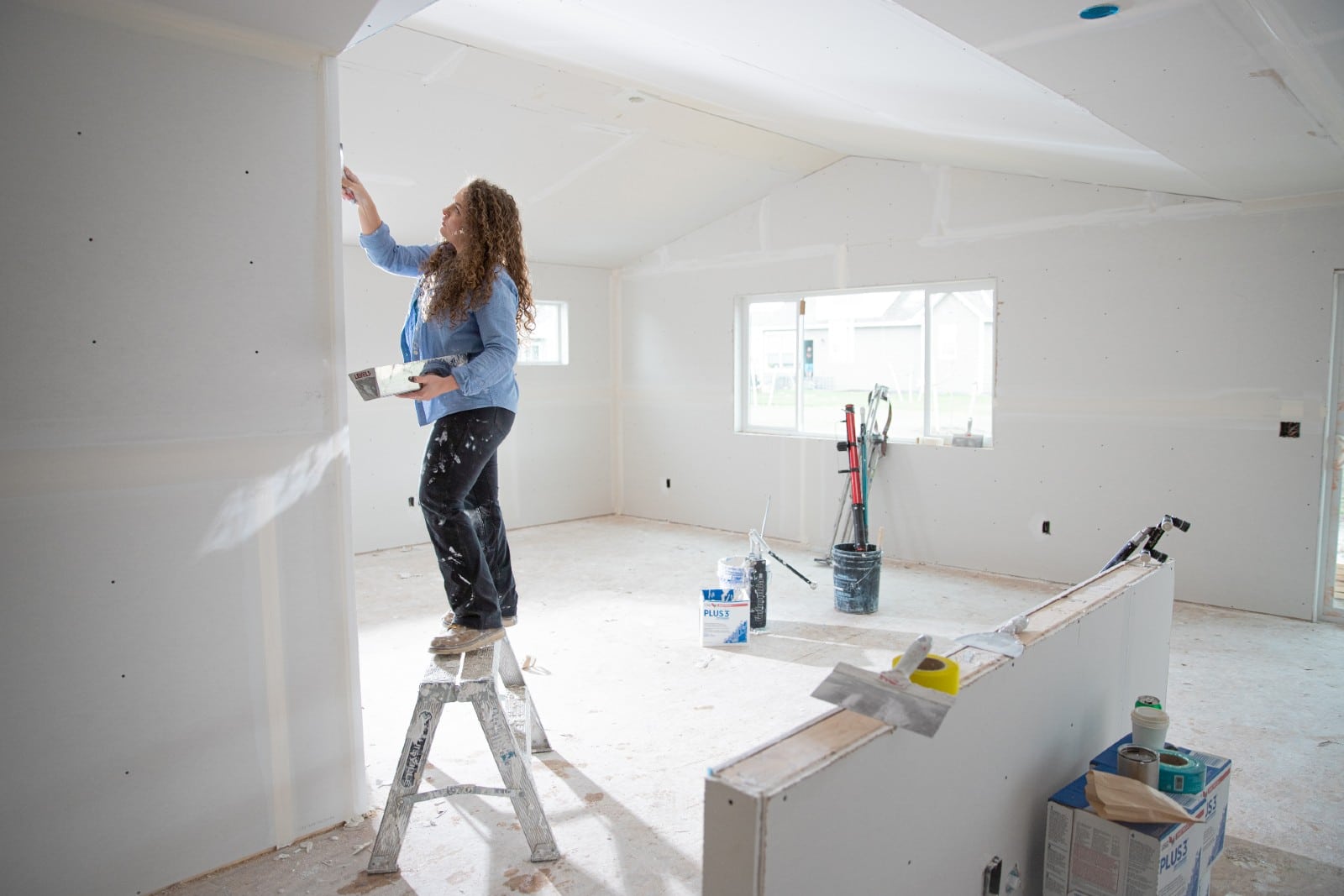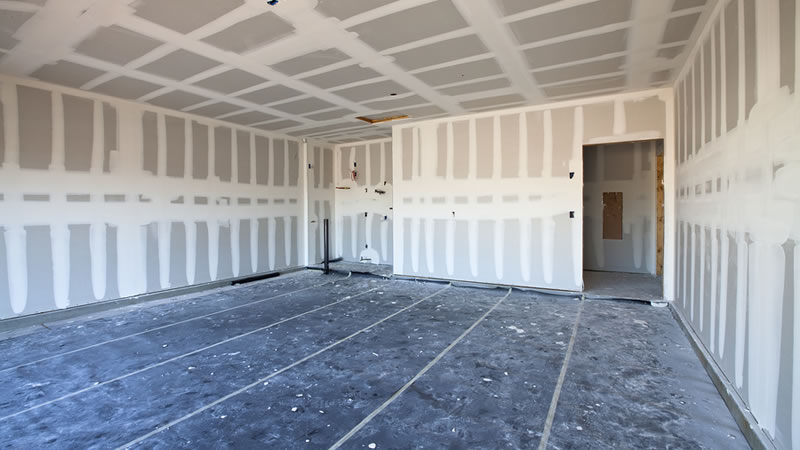Employing the most effective Drywall Contractors in Edmonton: A Comprehensive Checklist
The Ultimate Step-by-Step Guide to Drywall Installment: From Preparation to Painting
Drywall installation is an essential step in any kind of building or remodelling project, and it requires cautious focus to information and accurate execution. In this thorough guide, we will certainly stroll you via each action of the process, from the initial preparation to the final painting. From collecting the essential devices and products to gauging and cutting the drywall panels, we will certainly offer you with clear and succinct guidelines to ensure a successful installation. That's not all-- we will also cover the vital steps of safeguarding the panels, ending up the surfaces, and achieving a perfect paint task. So, whether you're an experienced do it yourself enthusiast or a novice homeowner, this overview is your best source for accomplishing professional results.
Gather Necessary Devices and Materials
To begin the drywall installation procedure, it is important to collect all the essential devices and materials in a professional manner. Having the right devices and materials not only ensures a smooth and efficient installment yet additionally adds to the general top quality and toughness of the ended up task.
Most importantly, you will require a measuring tape to accurately gauge the measurements of the wall surfaces and ceilings. This will enable you to cut the drywall sheets to the appropriate size, decreasing waste. An utility knife with sharp blades is essential for clean and exact cuts (drywall contractors). In addition, a T-square can help you accomplish straight and square cuts.
Next, you will require a cordless drill or screw weapon to safeguard the drywall sheets to the studs. Make certain to have an adequate number of drywall screws available. These screws should be long sufficient to pass through the drywall and firmly slow to the studs.
Various other crucial devices include a drywall lift or a number of aiding hands to aid with placing and holding the drywall sheets in position. A drywall T-square can be valuable for noting cutting lines, while a rasp or sanding block will certainly enable you to smooth any kind of rough edges.
Lastly, gather all the necessary safety and security tools, such as shatterproof glass, gloves, and a dust mask, to secure on your own during the installation process.
Prepare the Work Area
Prior to starting the drywall setup process, it is critical to sufficiently prepare the work location to make certain a smooth and reliable setup. This step is crucial as it sets the foundation for the whole task, enabling the setup to continue effortlessly.
To begin, it is essential to clear the workplace of any kind of furniture, decors, or various other things that might obstruct the installation procedure. This consists of removing wall surface hangings, covering furniture, and shielding the floors with decline towels or plastic sheets. Furthermore, make certain that the location is well-ventilated by opening up windows or using followers to stop the buildup of dirt and fumes.
Following, inspect the walls and ceilings for any kind of existing damage or irregularities. Resolve any problems such as cracks, openings, or irregular surface areas prior to continuing with the installment. This may involve patching up holes, sanding down rough locations, or applying a skim layer to level the surface.
Last but not least, procedure and mark the design of the drywall sheets on the ceilings and wall surfaces. This will certainly act as an overview throughout the installment procedure and help ensure accurate placement of the panels (drywall Edmonton). Take into account any kind of electrical outlets, buttons, or other components that may require special focus
Measure and Cut the Drywall Panels
When functioning with drywall panels during the installment procedure,Specific cuts and exact measurements are crucial. Before cutting the drywall, drywall Edmonton it is vital to measure the dimensions of the location where the panels will certainly be installed. Utilize a gauging tape to figure out the height and size of each area, and see to it to represent any kind of outlets or components that might call for custom-made cuts.
When the measurements are taken, move them onto the drywall panels noting or utilizing a pencil device. Ascertain the measurements to make certain accuracy prior to waging the reducing process. It is recommended to use a T-square or straight side to produce straight lines for cutting.

When cutting drywall to secure yourself from debris,Remember to use safety goggles and dirt masks. In addition, it is advisable to have somebody assist you in holding the panels throughout the reducing procedure to make sure stability and precision
Install and Secure the Drywall Panels
Appropriate installment and secure attachment of the drywall panels is crucial for a effective and long lasting coating. To begin, meticulously lift the drywall panel right into area, ensuring it straightens with the significant standards on the wall. Utilize a drywall lift or enlist the aid of an additional person to hold the panel in position while you safeguard it. Starting from one edge, insert drywall screws into the panel, driving them via the drywall and into the wall studs. Be certain to room the screws equally, approximately every 16 inches along the edges and every 12 inches in the. It is very important to prevent over-tightening the screws, as this can create the drywall to break or break. Repeat this process for each panel, guaranteeing they fit snugly together with no spaces. When all the panels are installed, check the surface area for any type of protruding flaws or screws. Drill or use a screwdriver to sink any sticking out screws somewhat below the surface area. Lastly, use drywall joint substance to cover the joints between the panels and allow it dry completely before continuing to the following action.

Finish and Paint the Drywall Surfaces
To accomplish a polished and expert finish, the next step after setting up and safeguarding the drywall panels is to carefully finish and paint the drywall surface areas. Any kind of visible joints or joints in between the drywall panels need to be covered with joint compound and tape. Before painting, it is vital to prime the drywall surface areas to guarantee correct attachment and a smooth finish.
Conclusion

From gathering the essential tools and materials to determining and reducing the drywall panels, we will provide you with clear and succinct guidelines to guarantee a successful installation.Specific cuts and exact measurements are vital when working with drywall panels during the installment process.Correct setup and safe and secure add-on of the drywall panels is crucial for a successful and sturdy finish. Starting from one corner, insert drywall screws right into the panel, driving them with the drywall and into the wall studs.To achieve a sleek and expert surface, the next action after setting up and safeguarding the drywall panels is to meticulously end up and repaint the drywall surfaces.